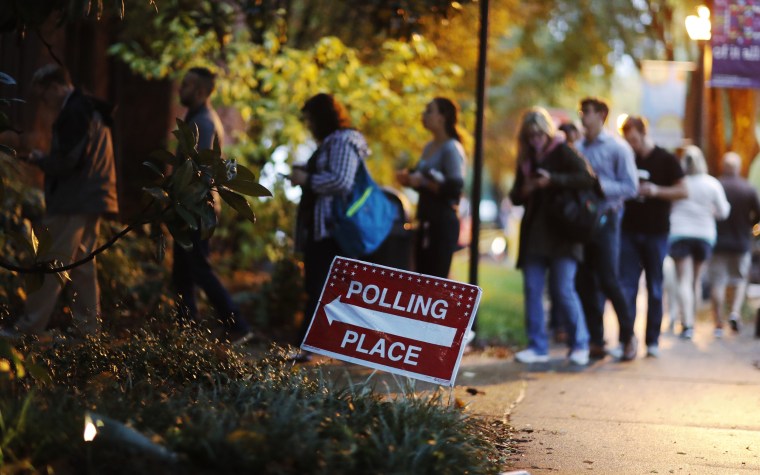WASHINGTON — The 2020 electorate will be the most diverse yet, according to a report released Wednesday by the Pew Research Center.
One-third of all eligible voters will be nonwhite — a new high — driven by younger voters aging into the electorate for the first time and older voters aging out. Immigration is also a factor, with 10 percent of potential voters expected to have been born abroad, up from 6 percent in 2000.
For the first time, Hispanic voters are expected to be the largest nonwhite portion of the electorate at 13.3 percent, overtaking black voters who are projected to make up 12.5 percent of the voting pool. That's a big ongoing shift from 2000, when Hispanic voters accounted for just 7.4 percent of the electorate. Asian voters are projected to make up 4.7 percent of the vote in 2020, up from 2.5 percent in 2000.
The election marks the emergence of Generation Z — the generation after millennials, who were born after 1996 — into the electorate. Ten percent of the eligible electorate will be in this cohort, up from 4 percent in 2016. Millennials will make up about the same share as they did in 2016 at 27 percent, while Generation X will make up 25 percent, Baby Boomers 28 percent, and the Silent Generation (those born before 1946) and older 9 percent.
But the generational shifts don't necessarily mean the actual population that shows up to vote in the presidential contest will change in the same way. Older voters tend to turn out at much higher rates than younger voters, which could limit Generation Z's effects on the race.
The rise of younger, more diverse, and more ideologically liberal generations into the voting population presents some challenges for the Republican Party, however, who have relied on outsize performances among older white voters to generate victories in recent cycles.
If President Donald Trump can't make deeper inroads with these voters in 2020, he may have to boost his own turnout and margins among white voters to greater heights to win re-election after a 2016 victory in which he lost the popular vote, but narrowly carried key states.

